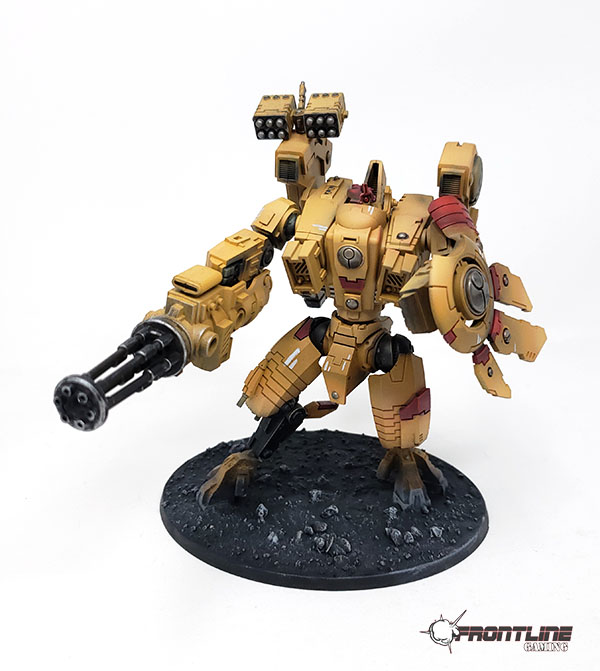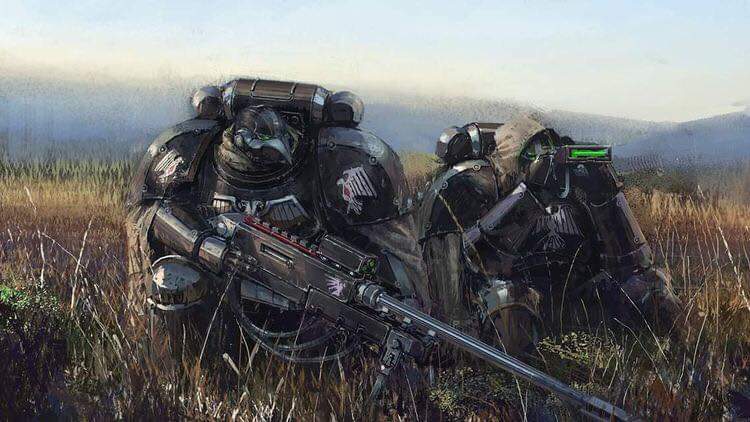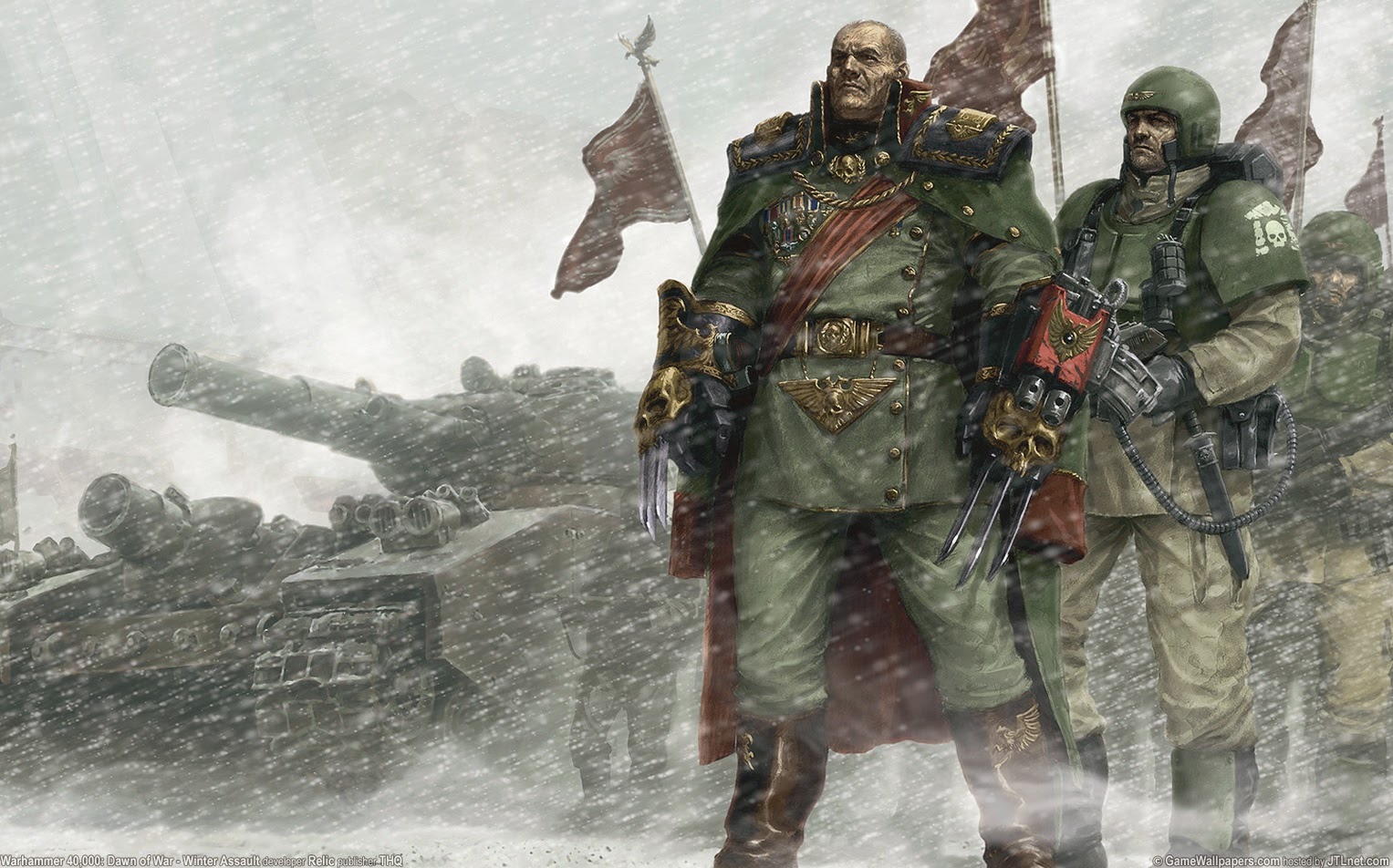Happy new year, folks! Rhys here. Today I’m going to take inspiration from the Chapter Tactics podcast: I want to talk about how we can use heuristics to improve our games in 40k, and along the way I’m going to tell you a couple of heuristics that I use to improve my play.
The chaps at Chapter Tactics discussed the issue of heuristics a few weeks back. As usual with Chapter Tactics, it’s a great discussion. If you’re interested in ways to improve your game that aren’t found between the covers of your particular codex, I’d certainly recommend giving it a listen.
First, let’s define exactly what we’re talking about. What is a heuristic? A heuristic is simply a method of solving a problem or reaching a goal. We could, of course, go into much more detail than this, but for the sake of this discussion, this definition is sufficient.
How can we apply heuristics to 40k? If we take a broad approach, we could define a basic heuristic that applies to all games of 40k. What problem would we want to solve? We want to score more points than our opponent. How do we solve this problem? We destroy all of our opponent’s scoring units. What is our heuristic? We destroy our opponent’s scoring units. Of course, this is the objective of almost all competitive games of 40k, but it illustrates the point. We have a problem. We need a solution. Our heuristic gives us a method of getting to our solution.
So far, so simple. Let’s dig deeper.
I’ve mentioned it a handful of times before in previous articles, but it bears repeating: 40k is a complicated game. At any one time, players have a lot to think about. The best players on the planet keep track of dozens of different elements of the game at once. They’ve had a lot of practice. Most of these guys know the game inside out. In fact, I’d say that one of the skills that a really great player of 40k must master is the ability to see the whole game, to know what is interacting with what at any one time, and to plan accordingly. The game is complicated.
But what does the game’s complexity mean for the use of heuristics. Put simply, heuristics can simplify things. Remember, 40k is tiring. Competitive players use a lot of energy when they play. And this makes it easy to forget something important. It’s easy to overlook something obvious. Everyone has done it. We’ve all had that moment in which we look at the board and think how did I miss that? Perhaps you forgot to charge a key unit. Maybe you overlooked a key objective. We’ve all done it.

Let me give you an example of something I’ve forgotten a not-insignificant number of times: my Riptide’s Nova Charge ability. For the uninitiated, the Riptide has an ability called Nova Charge, which, for the cost of a mortal wound, allows the player to do one of three things: increase the number of shots that the Riptide’s main weapon fires, increases the Riptide’s invulnerable save from 5+ to 3+, allow the Riptide to move 2d6 in the charge phase without declaring a charge. This ability must be used in the movement phase. How many times, dear reader, have I started rolling dice in the shooting phase only to remember that I completely forgot to Nova Charge my Riptide? Too many.
The Nova Charge ability is, of course, a very strong power — it’s also really cool, but that’s not relevant right now — and it’s one of things that makes Riptides so valuable in the current meta. But I find that it is easily forgotten. And while most of my opponents will allow me to declare the Nova Charge ability in the shooting phase if I forget it in the movement phase, it’s actually quite poor form to forget. I shouldn’t have to rely on my opponent’s good graces to get the most out of my Riptide.
We’re all human. We all forget things. But what can we do to mitigate this? What simple, effective heuristic can we apply to this situation in order to remember everything that we need to remember? Here’s what I do: I write it down.
I like to keep things simple. And it’s this simplicity that I like. Let me go into a bit more detail. I have a document on my phone that I refer to throughout the game. I keep my phone screen unlocked, so it’s always in my view. This document reminds me of what I need to remember in each phase of the game. It’s laid out in a simple format, with bold headings and bullet points. There isn’t much text. Each bullet point contains only the name of the rule that I want to remember. For example, under the heading “Movement phase”, there are two bullet points: “Nova Charge” and “Advance rolls”. You might be surprised at how many times I forget to advance my Shield Drones. They don’t have any guns. There’s nothing that they can do in my shooting phase. Advance your Shield Drones.
Here’s another useful one: under the heading “Before the movement phase”, I have one bullet point, which reads “Master of War”. For the non-T’au players, the T’au Commander’s Mont’ka and Kauyon abilities come under the Master of War rule. This ability must be used at the beginning of the T’au player’s turn.
There are two elements that make this a useful heuristic for me. First, having the information in view while I play is very handy. This much is obvious. Second, the act of having written these rules down makes me far more likely to remember them. And not only am I more likely to remember to use the rule itself, but I’m also more likely to remember the details of the rule, the who, the what, the when, and so on. This small act of writing, then, makes me more familiar with my codex and a better player.
We established above that 40k is a complex game. At any one time there’s a lot to keep track of. I’ve showed you what I do to keep the complexity at bay, but what about in-game strategy? What heuristics can we apply to our game play itself to improve the chances of victory?
I want to be careful here: this isn’t intended to be a tactics article. There are plenty of great articles on that subject already. No, this is an article about methods and process. The following heuristic, then, is intended to be broad and far-reaching. It’s not army specific; rather, it’s a rule to follow for effective play.
With that in mind, here’s the second thing that I do: I only shoot at what I can kill.

I can’t recall where exactly I first heard this piece of advice. Readers will know that Reece (great name) has mentioned it a few times on Signals from the Frontline. I’ve also heard a couple of the guys on the Independent Characters talk about it at one point or another. Whatever the case, I think it’s a great bit of advice, and a great heuristic for getting the most out of the shooting phase.
Let’s dig in to it a bit. The obvious rebuttal might go something like this: why would a player shoot at what he can’t kill? This is a fair point, but you might be surprised at how many times I’ve seen players waste a unit’s firepower shooting at something that their weapons are very unlikely to damage.
Indeed, as a T’au player, I see it quite a bit. It’s one of markers of an inexperienced player. Or even an experienced player who isn’t particularly good at the game. Why do I see it a lot as a T’au player? Riptides are really tough to kill. In fact, it’s more than that. Riptides are really tough to damage.
Inexperienced players will shoot at a Riptide, I’ll allocate the wounds to my Shield Drones, and the Riptide remains unscathed. Most competitive 40k players know the score. And if those same players had asked themselves what they could actually kill in the shooting phase, they likely would have taken a completely different path.
I find that this approach to the shooting phase really improves my overall game. For example, until my Commanders get into range with their Fusion Blasters and Cyclic Ion Blasters, I’m unlikely to do much damage against my opponent’s tanks and flyers. Don’t get me wrong: a fulled buffed Riptide can do some serious work against most Aeldari flyers and vehicles, for example, but can I guarantee that it will be destroyed? Probably not. There’s a decent chance, of course, but I probably don’t want to risk it.
This means that I need to take other steps to mitigate my opponent’s firepower. Usually, this will mean being particularly careful in the movement phase. I need my key units to remain in Savior Protocol range. I need to lean on my Commanders’ character keyword. I could put something big down a bracket, perhaps two, but I know that I’m not going to be able to rely on that. If I only shoot at what I can kill, I’m planning my turn around elements that are under my control. The best players know that the game is won and lost in the movement phase. This is useful reminder of that.
These are the two heuristics that I rely on during my games. Are they perfect? No. Do they work all of the time? They don’t. But do they make a complex game slightly simpler? Absolutely. And anything that makes rolling dice that little bit easier is a good thing in my book.
And remember, Frontline Gaming sells gaming products at a discount, every day in their webcart!




All Greek to me … had to read the Oxford Dictionary to make sense of the term. It’s not caught on in two millennium, so little change of it doing so now !
Play with an army often enough and you won’t forget the abilities/intricacies of using each piece. Before then I have a flowchart, of similar items to your article, written in order for each phase. This is adapted as I play more.
BUT relying on the ‘phone causes a potential problem. I’ve lost track of the number of times a ‘phone or iPad has run out of charge and suddenly my opponents searching for a powerpoint or charger.
Instead, I’ve written the weapon characteristics etc on the models base. eg- three different kinds of landspeeders all have move/save/weapons written in silver paint pen on the underneath. Different weapon types have the change written on the Infantry models rim … eg- stalker bolt rifles range/S/AP/damage. Each time I move them, I can glance and check (important after 8 editions. Next edition I’ll paint over in black and start again if I need to.)
I completely agree, Rob. There really is no substitute for playing with your army over and over again until you know it like the back of your hand.
I also agree that having a device open on the table itself isn’t perfect, especially at big events where players will play three or more games in a day. But it’s something at least. We could always go old-school and employ a pen and paper!
I’d modify the “shoot only what you can kill” slightly.
Unless you are playing in timed rounds, shooting what you can kill should be the priority (and of course so is limiting lanes of incoming fire during the movement phase), but also remember to shoot everything if at all possible.
Why?
Because even if you can’t kill something this turn, knocking wounds off it for next turn is advantageous.
I’ve won and lost a number of games based on folks forgetting to shoot units or deciding it wasn’t worth rolling the dice because of the modifiers.
I like the thrust of the article but have a quibble with the diction.
I’m not sure I necessarily agree with heuristic used in this discussion. I think it’s more like, basic strategy? Just like the napoleonic war was defined by Infantry in square beat cavalry but are hurt by cannon and musket fire more. A new general should know that rule and follow it until they’re good enough to know when to break it.
I do use heuristics a whole lot when I’m playing. But they’re smaller scale.
How many hits will I get on 21 dice with a rerollable 5+? Well, I could multiple 21 by 2/3 then 2/3 or mulitply it by .55 but I think it’s easier to just divide by 2 and add 1. I will get an answer that isn’t exactly right but is approximately right for my purposes.
Writing stuff you need to know isn’t a heuristic, that isn’t a simplified process to quickly get an approximately correct answer, it’s just a good organization tip.